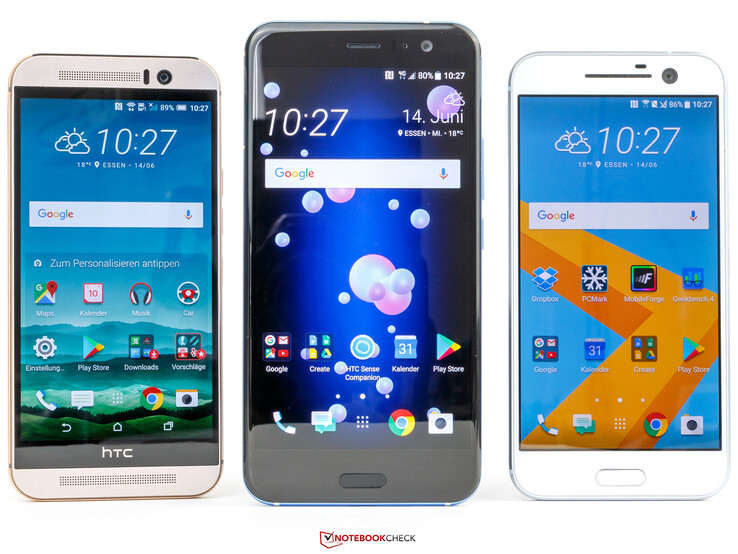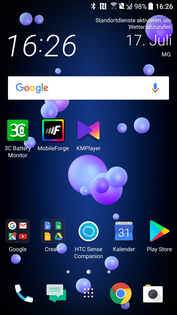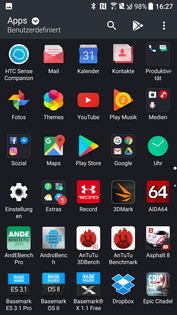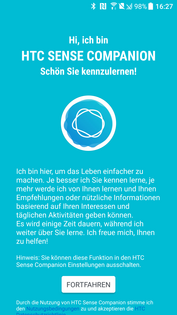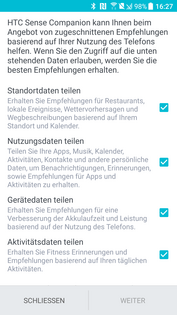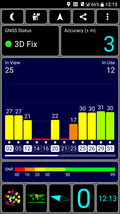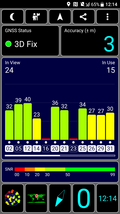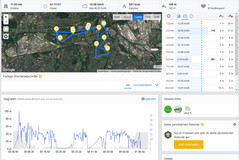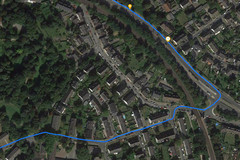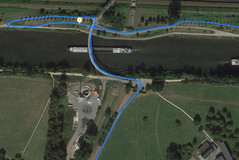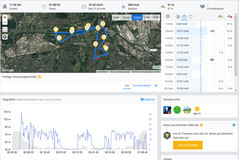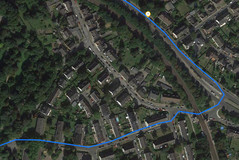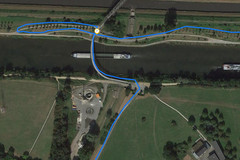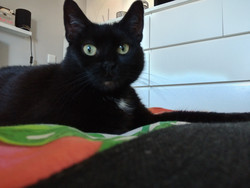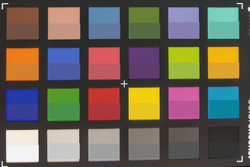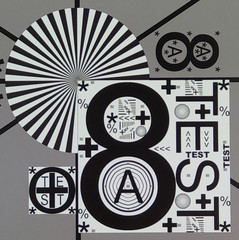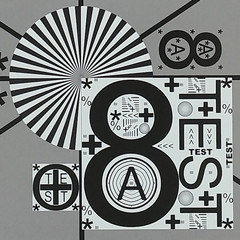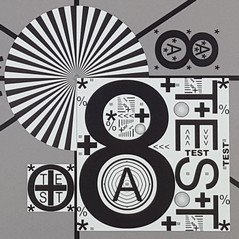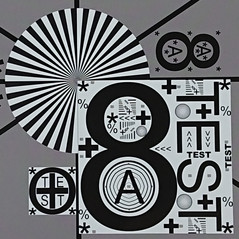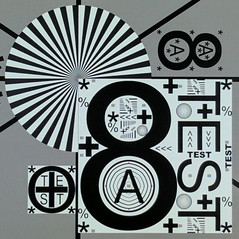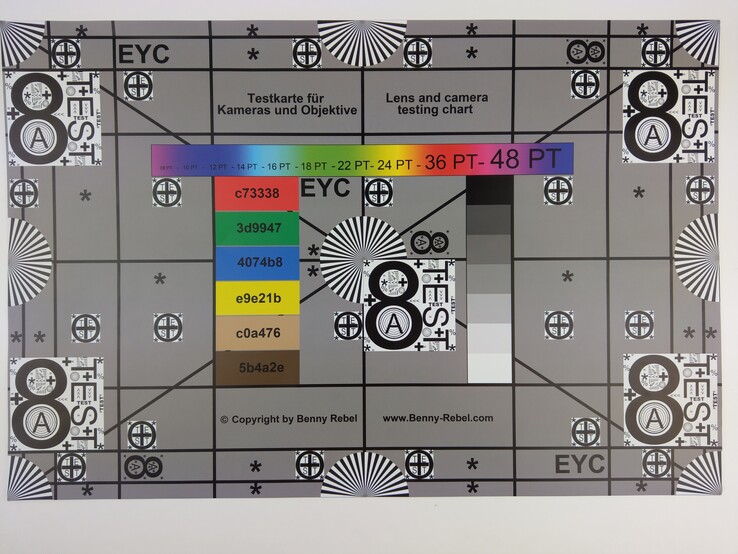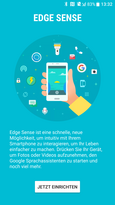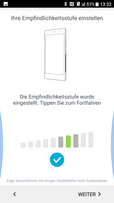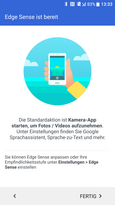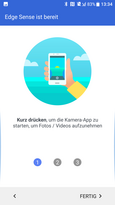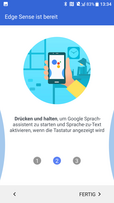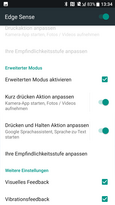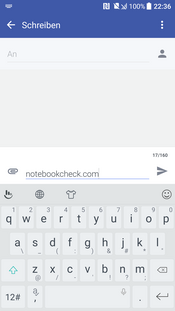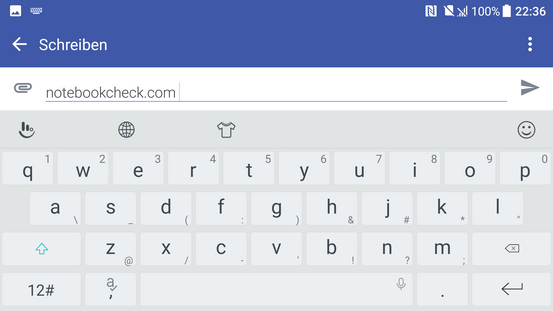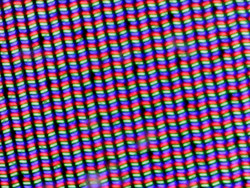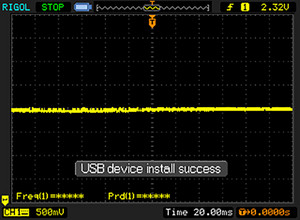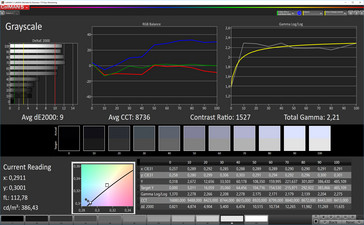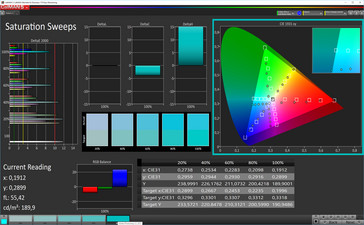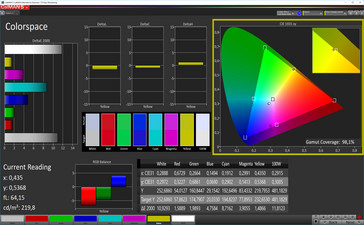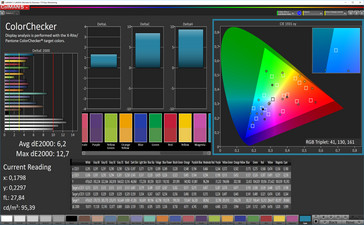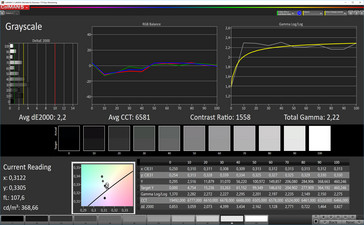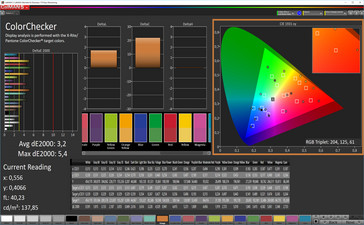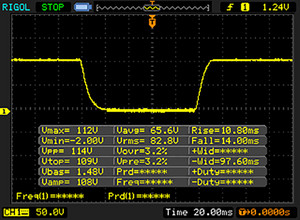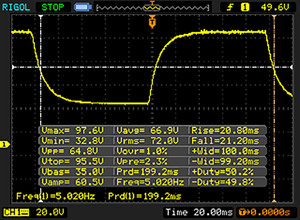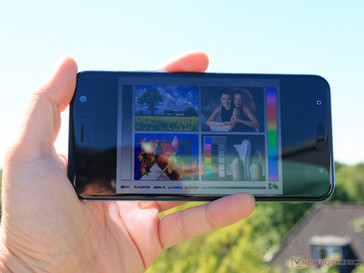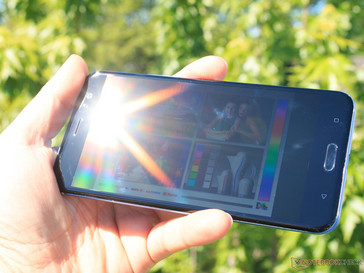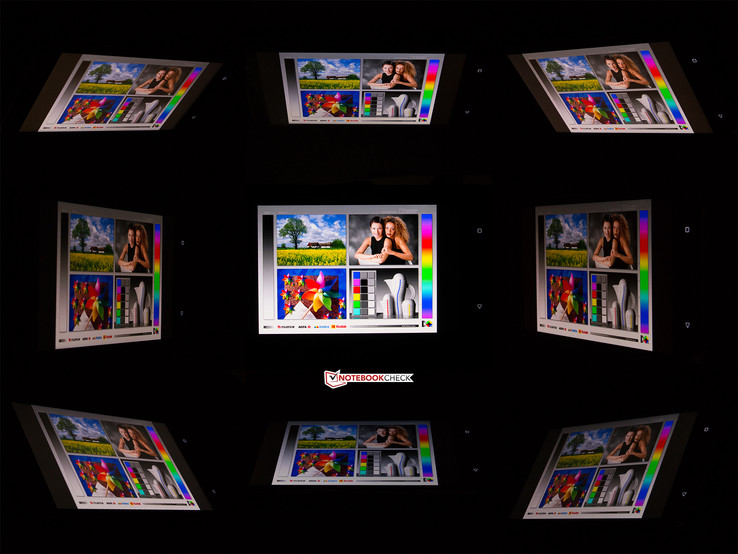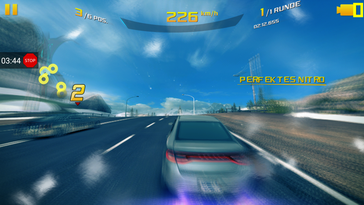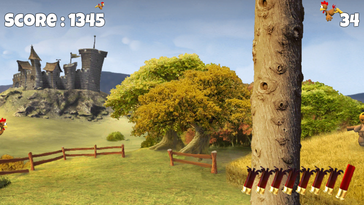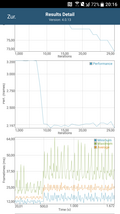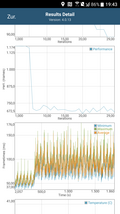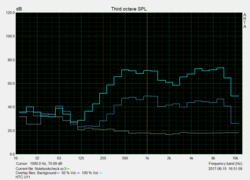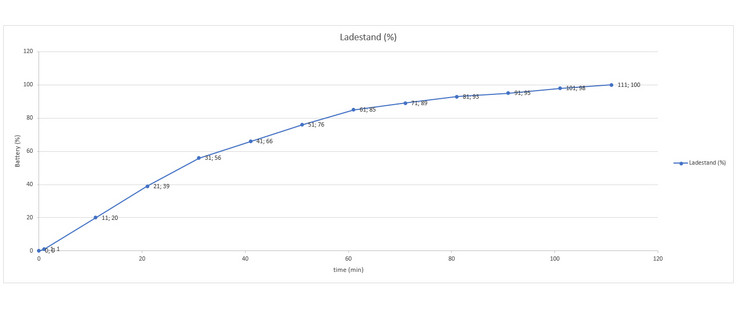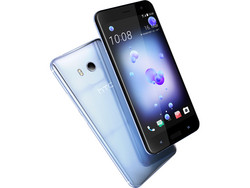HTC U11 Smartphone Review
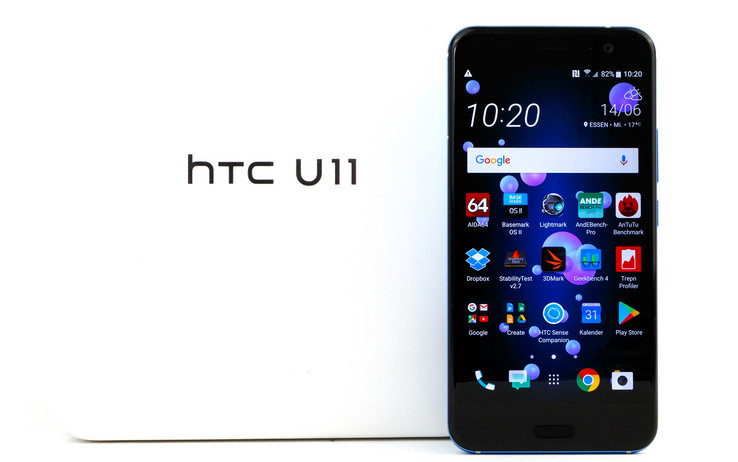
For the original German review, click here.
HTC hasn’t been very successful with its smartphones lately and customer response has been lukewarm. The Taiwanese manufacturer plans on changing that with the HTC U11, which incorporates the brand-new design first introduced with the HTC U Ultra. This means also that the predecessors' aluminum unibody design is now history.
The phone is equipped with the current top-of-the-line Qualcomm SoC, 4 GB of RAM and 64 GB of UFS 2.1 flash storage. The 5.5-inch display with its high resolution is protected by Corning Gorilla Glass 5. The smartphone ships with the current version of Android (7.1 Nougat) and a look at the spec sheet promises good camera performance as well. Given the screen size, the corresponding pixel density as well as the powerful SoC, the battery - which only has a capacity of 3000 mAh - seems a little on the small side, however. Users who prefer standard cabled headphones are going to be disappointed as well, as there’s no audio jack any longer.
Competitors are all other high-end phones like the Samsung Galaxy S8, Huawei P10 Plus, LG G6, Lenovo Moto Z, Apple iPhone 7 Plus, OnePlus 5, Sony Xperia XZ Premium and the Xiaomi Mi 6.
Note: in the US, unlocked models are available for about $650; at the time of writing, Sprint has the exclusive for carrier partners and offers the phone for $700.
Update 07-28-2017: HTC rolls out the firmware 1.13.401.1. Please refer to the Software section for details.
Update 09-04-2017: HTC has addressed the uncertainties regarding support for aptX. We've updated our review accordingly, details can be found in the speaker section.
Case
At just about 8.0 mm, the U11 is one of the thicker devices out there. HTC specifies 7.0 mm, but that’s only an average: according to our measurements, the smartphone is 8.9 mm thick and 9.8 mm if we include the camera lens, which protrudes slightly. Since the back is curved, the added thickness isn’t really noticeable and the U11 is very easy to hold.
The HTC U11 is certified with an IP67 rating and features protection against dust and water. The phone is impervious to dust and should be able to handle submersion in freshwater for brief periods of time. The battery is integrated and is thus not user-replaceable. The cover for the card slot up top is – just like the U11’s entire frame – made from aluminum, but is slightly darker. The actual tray for the Nano SIM and the microSD card is make from black plastic.
The transition between the different materials can be felt quite easily, but the gaps are very narrow and even. The build quality generallyl leaves us with a positive impression. The glass surfaces yield to moderate pressure, which in turn has a slight ripple effect on the display. Our twist attempts had next to no effect, but there was a slight creaking sound when doing so.
The colorful back is a visual highlight, even though the surfaces are reflective and touching them results in visible – but easily removable – smudges. The way the colors change depending on the angle is really quite jaw-dropping. According to HTC, the primary color choices are silver, blue, black, red and white.
Connectivity
The microSD card slot accepts cards up to the current maximum size of 256 GB. The card can also be formated as internal storage, if so desired.
The USB connector is a Type-C port and transfers data according to standard USB 3.1 (Gen. 1); in addition, the port can output HDMI or DisplayPort signals via optional adapters. The USB port is also used for audio signals and a standard 3.5 mm audio headphone requires the use of the included adapter.
Although the Snapdragon CPU theoretically supports Bluetooth 5.0, it's only 4.2 in this case since Android doesn't support version 5.0 yet. It's possible that that's going to change with Android O this fall. Sharing media wirelessly is possible as well with DLNA, AirPlay, Miracast, or WiFi Direct. To quickly connect other devices or to pay during checkout at a store, the smartphone is equipped with NFC as well.
Software
HTC uses the 7.1.1 Nougat, which is the current version of Android at the time of writing. No security patches have been pushed out yet, so our phone is still up-to-date (release date: 04/01/2017).
The software add-ons are restricted to a few titles from HTC like the Sense Companion, which we examined more closely during our review of the HTC U Ultra. The list of preinstalled apps is short and includes Facebook, Instagram and Facebook Messenger. Those applications can't be removed completely, but they can be deactivated at least.
Update 07-28-2017: HTC makes the new firmware 1.13.401.1 available. It can be installed on the smartphone via OTA. The update with 377 MB only brings system optimizations and upgrades the Android OS to the security patch level from 06-01-2017.
Communication and GPS
The Qualcomm X16 LTE module is the current cream of the crop when it comes to the mobile Internet. Connected to a suitable LTE network, it's possible to achieve download and upload speeds of up 1 GBit/s and 150 MBit/s, respectively. The smartphone supports many different bands, but there are some gaps which might restrict the usage in the US or in Asia. Users of the U11 in Europe don't need to worry though. Our review smartphone only supports a single SIM card, but supposedly there's a version with Dual-SIM support as well. The reception quality within the city - we tried both Vodafone and O2 - is good without any notable issues.
The WLAN module supports the current IEEE standards a/b/g/n/ac as well as MIMO; the send and receive transfer rates between the HTC U11 and our reference router Linksys EA8500 are very good, but not exactly record-breaking, either. Reception was great even at distances of 12 m / 40' from the router. Websites loaded with a slight delay, but an HD video stream continued without interruption.
| Networking | |
| iperf3 transmit AX12 | |
| Samsung Galaxy S8 | |
| HTC U11 | |
| Sony Xperia XZ Premium | |
| LG G6 | |
| iperf3 receive AX12 | |
| Sony Xperia XZ Premium | |
| HTC U11 | |
| Samsung Galaxy S8 | |
| LG G6 | |
Location services are courtesy of the satellite networks GPS, Glonass and BeiDou. Since the Snapdragon SoC also supports Galileo, we would've expected for the U11 to support it as well - but HTC doesn't provide any information in this regard. And indeed: during our test, we never had any European satellites pop up. Nonetheless, the location is established quickly and accurately - even within buildings, although the accuracy suffers a bit and it takes a little bit longer to establish the first connection.
We embark on a little bike ride to compare the HTC U11 with the cycling GPS Garmin Edge 500. The difference in the recorded distance at the end of the trip is only 10 m (33'); a closer comparison of the two devices shows that the tracks are very similar as well. Consequently, the HTC U11 is very reliable choice for outdoor navigation.
Telephony and Voice Quality
The telephony app is mostly standard Android fare and only features one additional tab for contact groups. The smartphone supports all modern standards like VoLTE and WiFi Calling.
When used in a normal (on-ear) fashion, the sound quality is very good on both ends of the conversation. The speaker reverberates ever-so-slightly, but even so, the conversational experience is very decent in quiet surroundings. The included headset is one of the better ones and even supports active noise canceling (ANC). This feature works pretty well, but the “anti-noise” output is audible in quiet sequences and the response is slightly delayed in dead silence.
Cameras
The front-facing camera sports a whopping 16 MP, which - in conjunction with the aperture of f/2.0 - should allow for a superb selfie-experience. The camera features facial recognition, but unfortunately doesn't support autofocus. The resulting pics are very decent at higher light levels, but in darker environments, the photos are not as sharp, although the noise reduction is quite good.
The main camera offers 12.2 MP, an aperture of f/1.7 and a pixel size of 1.40 μm (HTC Ultra Pixel 3). From a technical standpoint, the camera compares to those of the Google Pixel XL or the Galaxy S8+. The predecessor HTC 10 had larger pixels measuring 1.55 μm, which were touted as being more light sensitive - but the smartphone couldn't capitalize on this supposed advantage. The HTC U11 takes a huge leap forward in that regard. In daylight, the review smartphone takes outstanding pictures and even HDR works well without the distinct halos the S8+ produces (see scene 1). Compared to the LG G6, sharpening is slightly softer. Scene 2 depicts the dynamic range, which is quite good when compared to others, but the vividness does take a slight hit. One major advantage HTC's new smartphone has over the predecessor is its low-light ability. The U11 actually bests its competitors here: while it doesn't capture the most amount of light, the atmosphere remains intact since there are no jagged edges or similar and the noise remains within reasonable limits. RAW photos can be taken with the phone switched to "pro mode".
The U11 can record videos at Ultra HD resolution (4k, 3840 x 2160 Pixel, 30 fps). Even in Full HD, the maximum frame rate is unfortunately limited to 30 fps. The sound quality is outstanding no matter which mode is used, since the smartphone is equipped with four microphones and capable of recording 3D sound. Time lapse videos are restricted to 720p and a maximum length of 45 minutes; slow motion takes advantage of the full 60 fps in Full HD for recording purposes, but the playback is once again limited to 30 fps. The HTC U11 is generally fairly light sensitive when recording movies as well, but low ambient light does induce visible image noise. In addition, the image stabilization is can't quite compensate enough at times.
HTC didn't do much wrong when it comes to the U11's camera quality. We do feel that there aren't enough options in video mode and that the resolution isn't high enough in certain special modes. Even more disappointing is the camera app itself though, since it lacks options and hasn't been updated since the HTC 10 was released. For photography, the U11 is a superb choice, however.
We also subject the main camera to further tests in our controlled environment. We use the X-Rite ColorChecker Passport to determine the color accuracy. The white balance is a little on the warm side and most colors are slightly brighter and quite saturated, which increases the vividness of most of them. Only Violet-Blue is not quite saturated enough in our opinion.
A quick glance at the test chart reveals almost consistent sharpness even at the edges - the fall-off is very minor indeed. The HTC U11 doesn't have any issues with color gradients, either: even dark writing on a dark background is reproduced clearly. Sharpness in the middle of the frame is very good and quite similar to Galaxy S8+. The Xperia XZ Premium, LG G6 and the Pixel XL capture a little more detail, however.
Accessories and Warranty
The box contents are actually pretty generous and include a modular power adapter (5 V/2.5 A; 9 V/1,7 A), a USB cable (Type-A to Type-C), a SIM tool, a transparent protective cover, a cleaning cloth, an adapter (3.5 mm audio to USB Type-C) and the HTC USonic headset.
These accessories are also available in HTC's online store. The power adapter costs 35 Euro in Germany ($35 in the US), the USonic headphones 40 Euro ($40 in the US) and the USB-C Digital to 3.5mm Audio Jack Adapter 13 Euro ($13 in the US). In addition, HTC sells the JBL Reflect Aware C Earphones for 199 Euro ($140 in the US).
In Germany, the phone is protected against defects for a period of 24 months.
Input Devices & Operation
The capacitive touchscreen is protected by Corning Gorilla Glass 5 and recognizes up to ten inputs simultaneously. Fingers glide easily and the inputs are translated quickly across the no matter where the screen is touched. TouchPal is pre-installed, but of course there are other keyboard layouts available from the Google Play Store.
In addition to the Google Assistant, Amazon's Alexa is supported as well - although the latter personal virtual assistant isn't available in Germany yet at the time of writing. A special feature is Edge Sense, which in essence is a pressure-sensitive frame design, which allows the execution of predefined actions - for example starting the camera or the flashlight, connecting to a WLAN hotspot or launching a desired application - by squeezing the sides of the phone. The pressure sensitivity is adjustable, but it requires a delicate touch, since a slight mis-adjustment could either mean that lots of pressure is required or that the phone starts reacting when it's picked up.
The fingerprint scanner disables some of these functions. A predefined application, for example, can't be opened unless the the finger touches the sensor or the phone has been unlocked by other means. The fingerprint sensor operates reliably and quickly and takes the user either to the lock or to the start screen as desired.
Display
Compared to the predecessor HTC 10, the display has grown slightly and now measures 5.5 inches. Together with the high resolution of 2560 x 1440 pixels, the display has a pixel density of 534 ppi, which means that the screen content is supremely sharp - in fact, only the Xperia XZ Premium (3840 x 2160 Pixel, 801 ppi) is superior.
At 500 cd/m², the brightness of Super LC Display is good, but can't measure up to most competitors. The brightness measurements achieved with the sensor active and a 50/50 distribution of bright and dark areas (APL50) is very similar. Because of the good black value (0.33 cd/m²), the contrast ratio is very good, but again not class-leading. The brightness distribution is even and our review smartphone doesn't suffer from light bleeding at all.
The minimum brightness of the panel could be lower, but there's a blue light filter to make late-night viewing easier on the eyes. HTC doesn't use PWM to adjust the brightness.
| |||||||||||||||||||||||||
Brightness Distribution: 90 %
Center on Battery: 482 cd/m²
Contrast: 1461:1 (Black: 0.33 cd/m²)
ΔE ColorChecker Calman: 3.2 | ∀{0.5-29.43 Ø4.78}
ΔE Greyscale Calman: 2.2 | ∀{0.09-98 Ø5}
Gamma: 2.22
CCT: 6581 K
| HTC U11 Super LCD5, 2560x1440, 5.5" | HTC 10 Super LCD 5, 2560x1440, 5.2" | Samsung Galaxy S8 Super AMOLED, 2960x1440, 5.8" | Huawei P10 Plus LTPS, 2560x1440, 5.5" | OnePlus 5 AMOLED, 1920x1080, 5.5" | Apple iPhone 7 Plus IPS, 1920x1080, 5.5" | Sony Xperia XZ Premium IPS, 3840x2160, 5.5" | |
|---|---|---|---|---|---|---|---|
| Screen | -13% | 3% | 5% | 13% | 23% | -11% | |
| Brightness middle (cd/m²) | 482 | 445 -8% | 566 17% | 568 18% | 426 -12% | 557 16% | 578 20% |
| Brightness (cd/m²) | 472 | 434 -8% | 564 19% | 562 19% | 431 -9% | 553 17% | 568 20% |
| Brightness Distribution (%) | 90 | 93 3% | 94 4% | 92 2% | 93 3% | 97 8% | 92 2% |
| Black Level * (cd/m²) | 0.33 | 0.36 -9% | 0.43 -30% | 0.35 -6% | 0.62 -88% | ||
| Contrast (:1) | 1461 | 1236 -15% | 1321 -10% | 1591 9% | 932 -36% | ||
| Colorchecker dE 2000 * | 3.2 | 2.8 12% | 2.7 16% | 2.4 25% | 1.6 50% | 1.4 56% | 2.8 12% |
| Colorchecker dE 2000 max. * | 5.4 | 5.8 -7% | 5.4 -0% | 3.8 30% | 4.1 24% | 3.1 43% | 5.1 6% |
| Greyscale dE 2000 * | 2.2 | 3.7 -68% | 3.1 -41% | 2.5 -14% | 1.7 23% | 1.3 41% | 2.8 -27% |
| Gamma | 2.22 99% | 2.31 95% | 2.15 102% | 2.37 93% | 2.25 98% | 2.21 100% | 2.15 102% |
| CCT | 6581 99% | 7164 91% | 6335 103% | 6779 96% | 6329 103% | 6667 97% | 6728 97% |
| Color Space (Percent of AdobeRGB 1998) (%) | 81.57 | 63.1 | |||||
| Color Space (Percent of sRGB) (%) | 99.87 | 99.83 |
* ... smaller is better
Screen Flickering / PWM (Pulse-Width Modulation)
| Screen flickering / PWM not detected | |||
In comparison: 53 % of all tested devices do not use PWM to dim the display. If PWM was detected, an average of 8108 (minimum: 5 - maximum: 343500) Hz was measured. | |||
We use a photospectrometer and the CalMAN software to get a better idea of how accurate the LC panel is when it comes to color reproduction. As shipped, the display is very cool, colors are slightly over-saturated and the DeltaE deviation is quite high. Users who prefer accurate colors should use the slider in the display settings under "color temperature" and slide it all the way to "warmer". The display still isn't perfect afterwards, but nonetheless very, very good. The graylevels lack any color casts afterward and only some of the colors deviate slightly. These deviations are within reason and and caused by the high saturation. The HTC U11 uses the P3 color space, which features a larger spectrum with more green and red tones than sRGB.
Display Response Times
| ↔ Response Time Black to White | ||
|---|---|---|
| 24.8 ms ... rise ↗ and fall ↘ combined | ↗ 10.8 ms rise | |
| ↘ 14 ms fall | ||
| The screen shows good response rates in our tests, but may be too slow for competitive gamers. In comparison, all tested devices range from 0.1 (minimum) to 240 (maximum) ms. » 57 % of all devices are better. This means that the measured response time is worse than the average of all tested devices (20.2 ms). | ||
| ↔ Response Time 50% Grey to 80% Grey | ||
| 42 ms ... rise ↗ and fall ↘ combined | ↗ 20.8 ms rise | |
| ↘ 21.2 ms fall | ||
| The screen shows slow response rates in our tests and will be unsatisfactory for gamers. In comparison, all tested devices range from 0.165 (minimum) to 636 (maximum) ms. » 66 % of all devices are better. This means that the measured response time is worse than the average of all tested devices (31.6 ms). | ||
Performance
The HTC U11 comes equipped with an octa-core Qualcomm Snapdragon 835. The cores are evenly split between a performance cluster running four Kryo 280 cores at 2.45 GHz (max) and an efficiency cluster running four Kryo 280 cores at 1.9 GHz. Graphics are courtesy of the integrated Adreno 540 GPU running at up to 710 Mhz. Compared to its predecessor, the GPU has been optimized and is now manufactured using a 10 nm process. The smartphone ships with 4 GB of RAM es well.
The processor performs much like we expected, although the Xiaomi Mi 6 proves that the Snapdragon is capable of more. The HTC U11 does also very well when it comes to graphics performance and is faster than the iPhone 7 Plus - at least as long as the Metal API isn't in play. Only when running the very demanding Basemark ES 3.1, the U11 falls behind Apple's smartphone and the Galaxy S8 (Exynos 8895), which both perform markedly better. The roles are reversed when it comes to the Lightmark benchmark, as the U11 now takes a clear lead. Either way, the HTC U11 manages to take full advantage of the Snapdragon's performance potential and is currently one of the fastest smartphones on the market.
This is reflected in the system performance as well, as HTC's Sensee interface runs buttery-smooth. PCMark and AnTuTu confirm our positive perceived impression.
| AnTuTu v6 - Total Score (sort by value) | |
| HTC U11 | |
| HTC 10 | |
| Samsung Galaxy S8 | |
| Huawei P10 Plus | |
| Sony Xperia XZ Premium | |
| LG G6 | |
| Lenovo Moto Z | |
| Xiaomi Mi 6 | |
| OnePlus 5 | |
| Apple iPhone 7 Plus | |
| PCMark for Android | |
| Work performance score (sort by value) | |
| HTC U11 | |
| HTC 10 | |
| Samsung Galaxy S8 | |
| Huawei P10 Plus | |
| Sony Xperia XZ Premium | |
| LG G6 | |
| Lenovo Moto Z | |
| Xiaomi Mi 6 | |
| OnePlus 5 | |
| Work 2.0 performance score (sort by value) | |
| HTC U11 | |
| HTC 10 | |
| Samsung Galaxy S8 | |
| Huawei P10 Plus | |
| Sony Xperia XZ Premium | |
| LG G6 | |
| Xiaomi Mi 6 | |
| OnePlus 5 | |
| Geekbench 4.4 | |
| 64 Bit Single-Core Score (sort by value) | |
| HTC U11 | |
| HTC 10 | |
| Samsung Galaxy S8 | |
| Huawei P10 Plus | |
| Sony Xperia XZ Premium | |
| LG G6 | |
| Xiaomi Mi 6 | |
| OnePlus 5 | |
| 64 Bit Multi-Core Score (sort by value) | |
| HTC U11 | |
| HTC 10 | |
| Samsung Galaxy S8 | |
| Huawei P10 Plus | |
| Sony Xperia XZ Premium | |
| LG G6 | |
| Xiaomi Mi 6 | |
| OnePlus 5 | |
| GFXBench (DX / GLBenchmark) 2.7 | |
| T-Rex Onscreen (sort by value) | |
| HTC U11 | |
| HTC 10 | |
| Samsung Galaxy S8 | |
| Huawei P10 Plus | |
| Sony Xperia XZ Premium | |
| LG G6 | |
| Lenovo Moto Z | |
| Xiaomi Mi 6 | |
| OnePlus 5 | |
| Apple iPhone 7 Plus | |
| 1920x1080 T-Rex Offscreen (sort by value) | |
| HTC U11 | |
| HTC 10 | |
| Samsung Galaxy S8 | |
| Huawei P10 Plus | |
| Sony Xperia XZ Premium | |
| LG G6 | |
| Lenovo Moto Z | |
| Xiaomi Mi 6 | |
| OnePlus 5 | |
| Apple iPhone 7 Plus | |
| GFXBench 3.0 | |
| on screen Manhattan Onscreen OGL (sort by value) | |
| HTC U11 | |
| HTC 10 | |
| Samsung Galaxy S8 | |
| Huawei P10 Plus | |
| Sony Xperia XZ Premium | |
| LG G6 | |
| Lenovo Moto Z | |
| Xiaomi Mi 6 | |
| OnePlus 5 | |
| Apple iPhone 7 Plus | |
| 1920x1080 1080p Manhattan Offscreen (sort by value) | |
| HTC U11 | |
| HTC 10 | |
| Samsung Galaxy S8 | |
| Huawei P10 Plus | |
| Sony Xperia XZ Premium | |
| LG G6 | |
| Lenovo Moto Z | |
| Xiaomi Mi 6 | |
| OnePlus 5 | |
| Apple iPhone 7 Plus | |
| GFXBench 3.1 | |
| on screen Manhattan ES 3.1 Onscreen (sort by value) | |
| HTC U11 | |
| HTC 10 | |
| Samsung Galaxy S8 | |
| Huawei P10 Plus | |
| Sony Xperia XZ Premium | |
| LG G6 | |
| Lenovo Moto Z | |
| Xiaomi Mi 6 | |
| OnePlus 5 | |
| Apple iPhone 7 Plus | |
| 1920x1080 Manhattan ES 3.1 Offscreen (sort by value) | |
| HTC U11 | |
| HTC 10 | |
| Samsung Galaxy S8 | |
| Huawei P10 Plus | |
| Sony Xperia XZ Premium | |
| LG G6 | |
| Lenovo Moto Z | |
| Xiaomi Mi 6 | |
| OnePlus 5 | |
| Apple iPhone 7 Plus | |
| GFXBench | |
| on screen Car Chase Onscreen (sort by value) | |
| HTC U11 | |
| HTC 10 | |
| Samsung Galaxy S8 | |
| Huawei P10 Plus | |
| Sony Xperia XZ Premium | |
| LG G6 | |
| Lenovo Moto Z | |
| Xiaomi Mi 6 | |
| OnePlus 5 | |
| 1920x1080 Car Chase Offscreen (sort by value) | |
| HTC U11 | |
| HTC 10 | |
| Samsung Galaxy S8 | |
| Huawei P10 Plus | |
| Sony Xperia XZ Premium | |
| LG G6 | |
| Lenovo Moto Z | |
| Xiaomi Mi 6 | |
| OnePlus 5 | |
| Basemark ES 3.1 / Metal - offscreen Overall Score (sort by value) | |
| HTC U11 | |
| HTC 10 | |
| Samsung Galaxy S8 | |
| LG G6 | |
| Lenovo Moto Z | |
| Xiaomi Mi 6 | |
| Apple iPhone 7 Plus | |
| Lightmark - 1920x1080 1080p (sort by value) | |
| HTC U11 | |
| Samsung Galaxy S8 | |
| LG G6 | |
| Lenovo Moto Z | |
| Xiaomi Mi 6 | |
We used Google's Chrome browser - which comes preinstalled - for our benchmarks. Subjectively, the browsing speed is good, which the benchmarks confirm as well. The U11 can't outperform the iPhone 7 Plus, however and the Galaxy S8 performs somewhat better a majority of the time as well.
| WebXPRT 2015 - Overall (sort by value) | |
| HTC U11 (Chrome 58) | |
| HTC 10 (Chrome 49) | |
| Samsung Galaxy S8 (Samsung Browser 5.2) | |
| Huawei P10 Plus | |
| Sony Xperia XZ Premium (Chrome 59) | |
| LG G6 (Chrome 57) | |
| Lenovo Moto Z (Chrome 53) | |
| OnePlus 5 (Chrome 59) | |
| Apple iPhone 7 Plus | |
| Octane V2 - Total Score (sort by value) | |
| HTC U11 (Chrome 58) | |
| HTC 10 (Chrome 49) | |
| Samsung Galaxy S8 (Samsung Browser 5.2) | |
| Huawei P10 Plus (Chrome 58.0.3029.83) | |
| Sony Xperia XZ Premium (Chrome 59) | |
| LG G6 (Chrome 57) | |
| Lenovo Moto Z (Chrome 53) | |
| Xiaomi Mi 6 (Chrome Version 58) | |
| OnePlus 5 (Chrome 59) | |
| Apple iPhone 7 Plus (Safari Mobile 10.0) | |
| JetStream 1.1 - Total Score (sort by value) | |
| HTC U11 (Chrome 58) | |
| HTC 10 (Chrome 49) | |
| Samsung Galaxy S8 (Samsung Browser 5.2) | |
| Huawei P10 Plus | |
| Sony Xperia XZ Premium (Chrome 59) | |
| LG G6 (Chrome 57) | |
| Lenovo Moto Z (Chrome 53) | |
| Xiaomi Mi 6 (Chrome Version 58) | |
| OnePlus 5 (Chrome 59) | |
| Apple iPhone 7 Plus (Safari Mobile 10.0) | |
| Mozilla Kraken 1.1 - Total (sort by value) | |
| HTC U11 (Chrome 58) | |
| HTC 10 (Chrome 49) | |
| Samsung Galaxy S8 (Samsung Browser 5.2) | |
| Huawei P10 Plus (Chrome 58.0.3029.83) | |
| Sony Xperia XZ Premium (Chrome 59) | |
| LG G6 (Chrome 57) | |
| Lenovo Moto Z (Chrome 53) | |
| Xiaomi Mi 6 (Chrome Version 58) | |
| OnePlus 5 (Chrome 59) | |
| Apple iPhone 7 Plus (Safari Mobile 10.0) | |
* ... smaller is better
The HTC U11 features 64 GB of flash storage, which is pretty much the de-facto standard for flagship smartphones at the time of writing. Some manufacturers offer more storage, although frequently for an extra charge. Both the OnePlus 5 as well as the Huawei P10 Plus are less expensive in this regard or cost the same, but feature larger flash drives. After the initial boot, 53.39 GB are available to the user. The UFS 2.1 flash drive is one of the fastest ones available, which AndroBench confirms as well.
Storage can be expanded using a microSD card. We checked the speed of the card reader using our reference card Exceria Pro M401 (max. read: 95 MB/s, max. write: 80 MB/s). Unfortunately, the U11 trails the HTC 10 here and the overall results are just fair to middling.
| HTC U11 | HTC 10 | Samsung Galaxy S8 | Huawei P10 Plus | Sony Xperia XZ Premium | LG G6 | Lenovo Moto Z | Xiaomi Mi 6 | OnePlus 5 | |
|---|---|---|---|---|---|---|---|---|---|
| AndroBench 3-5 | -32% | -5% | 20% | -30% | -21% | -4% | -4% | -5% | |
| Sequential Read 256KB (MB/s) | 717 | 275.1 -62% | 793 11% | 733 2% | 687 -4% | 428.7 -40% | 439.7 -39% | 728 2% | 748 4% |
| Sequential Write 256KB (MB/s) | 206.4 | 115.6 -44% | 193.2 -6% | 182.6 -12% | 194 -6% | 122.8 -41% | 168.3 -18% | 196.7 -5% | 201.5 -2% |
| Random Read 4KB (MB/s) | 91.4 | 29.92 -67% | 127.2 39% | 173.1 89% | 74.1 -19% | 95.2 4% | 117.2 28% | 143.5 57% | 141 54% |
| Random Write 4KB (MB/s) | 80 | 15.89 -80% | 15.25 -81% | 149.8 87% | 17.2 -78% | 16.58 -79% | 74.9 -6% | 25.19 -69% | 19.3 -76% |
| Sequential Read 256KB SDCard (MB/s) | 68.8 ? | 83.3 ? 21% | 63.9 ? -7% | 54 ? -22% | 36.79 ? -47% | 77.6 ? 13% | 78.5 ? 14% | ||
| Sequential Write 256KB SDCard (MB/s) | 46.25 ? | 65.4 ? 41% | 53.5 ? 16% | 33.61 ? -27% | 33.31 ? -28% | 53.3 ? 15% | 45.64 ? -1% |
Games
The Qualcomm Adreno 540 supports all current technologies like DirectX 12 and Vulkan and is one of the fastest mobile GPUs on the market. Even at maximum details, no current game should tax the U11 to the limit. We aren't able to supply exact frame rates like we normally would, since our benchmark app GameBench refused to cooperate and only indicated 0 fps (see screenshot). This is quite unfortunate, since the older HTC 10 is one of the few smartphones which wasn't bogged down with a frame limiter when running Asphalt 8. We expect that this frame limit is now in place for the HTC U11 in order to increase the battery life - but we can't confirm it.
The U11 handles well and gaming is a joy, as all inputs are recognized and executed promptly. Our only issue: it's quite easy to accidentally cover up the main speaker on the bottom edge.
Emissions
Temperatur
HTC isn't quite as on top of things when it comes to the temperature. At above 40 ° in some areas, the U11 gets comparatively warm. Under load, the entire front gets hotter than 40 °C; the hotspot above the fingerprint sensor tops out at 46.3 °C. Even though this is a little on the high side, it's still not reason for concern.
We use the GFXBench Battery Test to check how the SoC behaves under continuous load. The T-Rex subtest utilizes the older OpenGL ES 2.0 API. Here, the performance of the HTC U11 drops by about a third after seven out of 30 passes. When running the demanding Manhattan Test (Open GL ES 3.1), throttling occurs after the fifth pass with the performance dropping by up to 43 %.
(-) The maximum temperature on the upper side is 46.3 °C / 115 F, compared to the average of 35.2 °C / 95 F, ranging from 21.9 to 247 °C for the class Smartphone.
(±) The bottom heats up to a maximum of 40.2 °C / 104 F, compared to the average of 34 °C / 93 F
(±) In idle usage, the average temperature for the upper side is 35.5 °C / 96 F, compared to the device average of 32.9 °C / 91 F.
Speakers
The two-speaker system used to be a standout feature of the company's flagship phones, but since the partnership with Beats Audio ended, the quality has taken a turn for the worse (a fact we also lamented when reviewing the HTC 10). The positioning of the speakers also seems to be sub-optimal for decent acoustics. There's a distinct volume drop-off in the range between 1250 and 4000 Hz, which likely could be fixed with an update. The Huawei P10 Plus is one of the phones that leads the way when it comes to the sound quality, but overall the HTC U11 is pleasing enough, especially when the speakers are not set to maximum volume.
The included USonic headset is very good with dynamic and powerful sound - it's rare these days that a manufacturer includes such a high-quality product for free. The headphone tunes the sound specifically to the user's ear, which makes an audible difference. Another positive is the fact that Hi-Res audio is supported as well. Unfortunately, the headphone needs to be attached using the USB Type-C port, since the U11 lacks a standard headphone jack. The adapter is included, but quite useless if the phone needs to be charged at the same time.
Bluetooth can be used to transmit audio as well, but this is one of the areas where HTC made some cuts: aptX and aptX HD are not supported, so many Bluetooth speakers like the Teufel Boomster XL don't reach their full potential.
Update 09-04-2017: At the IFA exhibition we had a chance to talk to HTC regarding the U11's support for aptX. According to the manufacturer, the U11 does support aptX but lacks support for the HD version thereof. However, the Android 8 Oreo update, that is supposed to land later this year, is supposed to include that as well.
HTC U11 audio analysis
(±) | speaker loudness is average but good (81.4 dB)
Bass 100 - 315 Hz
(-) | nearly no bass - on average 24.5% lower than median
(±) | linearity of bass is average (13.3% delta to prev. frequency)
Mids 400 - 2000 Hz
(+) | balanced mids - only 4.1% away from median
(±) | linearity of mids is average (7.4% delta to prev. frequency)
Highs 2 - 16 kHz
(±) | higher highs - on average 5.1% higher than median
(+) | highs are linear (6.2% delta to prev. frequency)
Overall 100 - 16.000 Hz
(±) | linearity of overall sound is average (22.1% difference to median)
Compared to same class
» 46% of all tested devices in this class were better, 7% similar, 47% worse
» The best had a delta of 11%, average was 35%, worst was 134%
Compared to all devices tested
» 63% of all tested devices were better, 6% similar, 31% worse
» The best had a delta of 4%, average was 24%, worst was 134%
Huawei P10 Plus audio analysis
(±) | speaker loudness is average but good (75.6 dB)
Bass 100 - 315 Hz
(-) | nearly no bass - on average 17.3% lower than median
(±) | linearity of bass is average (12.4% delta to prev. frequency)
Mids 400 - 2000 Hz
(+) | balanced mids - only 3.1% away from median
(+) | mids are linear (6.9% delta to prev. frequency)
Highs 2 - 16 kHz
(+) | balanced highs - only 1% away from median
(+) | highs are linear (3.9% delta to prev. frequency)
Overall 100 - 16.000 Hz
(±) | linearity of overall sound is average (16.8% difference to median)
Compared to same class
» 8% of all tested devices in this class were better, 7% similar, 85% worse
» The best had a delta of 11%, average was 35%, worst was 134%
Compared to all devices tested
» 29% of all tested devices were better, 7% similar, 64% worse
» The best had a delta of 4%, average was 24%, worst was 134%
no name audio analysis
(+) | speakers can play relatively loud (98.4 dB)
Bass 100 - 315 Hz
(+) | good bass - only 1.8% away from median
(+) | bass is linear (2.2% delta to prev. frequency)
Mids 400 - 2000 Hz
(+) | balanced mids - only 0.5% away from median
(+) | mids are linear (1.5% delta to prev. frequency)
Highs 2 - 16 kHz
(±) | reduced highs - on average 6.6% lower than median
(+) | highs are linear (2.7% delta to prev. frequency)
Overall 100 - 16.000 Hz
(+) | overall sound is linear (9% difference to median)
Compared to same class
» 3% of all tested devices in this class were better, 1% similar, 97% worse
» The best had a delta of 4%, average was 24%, worst was 134%
Compared to all devices tested
» 3% of all tested devices were better, 1% similar, 97% worse
» The best had a delta of 4%, average was 24%, worst was 134%
Frequenzdiagramm im Vergleich (Checkboxen oben an-/abwählbar!)
Battery Life
Power Consumption
The brighter and larger display negatively impacts the power consumption, although the power draw under maximum load has been reduced. All in all, only the Moto Z and the Galaxy S8 are more efficient.
Since the smartphone supports Quick Charge, charging the 3000 mAh battery doesn't take long and is generally completed in two hours or less. The U11 doesn't support wireless charging.
| Off / Standby | |
| Idle | |
| Load |
|
Key:
min: | |
| HTC U11 3000 mAh | HTC 10 3000 mAh | Samsung Galaxy S8 3000 mAh | Huawei P10 Plus 3750 mAh | Sony Xperia XZ Premium 3230 mAh | Apple iPhone 7 Plus 2915 mAh | Lenovo Moto Z 2600 mAh | OnePlus 5 3300 mAh | |
|---|---|---|---|---|---|---|---|---|
| Power Consumption | -11% | 24% | -41% | -11% | -8% | 21% | -2% | |
| Idle Minimum * (Watt) | 0.73 | 0.68 7% | 0.78 -7% | 1.03 -41% | 0.62 15% | 0.77 -5% | 0.66 10% | 0.73 -0% |
| Idle Average * (Watt) | 1.96 | 1.49 24% | 1.1 44% | 2.61 -33% | 2.44 -24% | 2.04 -4% | 1.01 48% | 1.44 27% |
| Idle Maximum * (Watt) | 1.98 | 1.91 4% | 1.16 41% | 2.83 -43% | 2.59 -31% | 2.24 -13% | 1.09 45% | 1.5 24% |
| Load Average * (Watt) | 4.82 | 7.4 -54% | 4.15 14% | 7.03 -46% | 4.94 -2% | 4.69 3% | 3.97 18% | 6.91 -43% |
| Load Maximum * (Watt) | 7.15 | 9.71 -36% | 5.12 28% | 10.08 -41% | 7.91 -11% | 8.66 -21% | 8.34 -17% | 8.51 -19% |
* ... smaller is better
Battery Life
The battery life isn't what we'd call bad, but the HTC U11 nonetheless slips to the last place in our comparison. Some competing smartphones simply run longer because of their larger batteries, but that's not the case for the Galaxy S8, the Moto Z or the iPhone 7 Plus.
To be able to compare the performance, we conduct our WLAN surf test with the panel set to 150 cd/m². Only the Moto Z does worse here; the Galaxy S8 lasts about 2.5 hours longer. When playing Full HD videos, the U11 is even surpassed by its predecessor and trails the rest of the field. The battery test of the PCMark for Android benchmark test confirms the rather lackluster performance as well.
With normal use, the HTC U11 should still last an entire day. In addition, the smartphone offers various power-saving features to increase the battery life.
| HTC U11 3000 mAh | HTC 10 3000 mAh | Samsung Galaxy S8 3000 mAh | Huawei P10 Plus 3750 mAh | Apple iPhone 7 Plus 2915 mAh | Sony Xperia XZ Premium 3230 mAh | LG G6 3300 mAh | Lenovo Moto Z 2600 mAh | Xiaomi Mi 6 3350 mAh | |
|---|---|---|---|---|---|---|---|---|---|
| Battery runtime | 1% | 36% | 26% | 31% | 34% | 36% | 20% | 32% | |
| Reader / Idle (h) | 20.8 | 21.2 2% | 27.8 34% | 27.6 33% | 30.6 47% | 29.2 40% | 29.8 43% | 22.9 10% | |
| H.264 (h) | 8.3 | 10.8 30% | 12.9 55% | 12.6 52% | 13.6 64% | 13.4 61% | 13 57% | 12.1 46% | |
| WiFi v1.3 (h) | 9.3 | 6.9 -26% | 12 29% | 12.7 37% | 9.8 5% | 11.6 25% | 11.5 24% | 6.8 -27% | 12.3 32% |
| Load (h) | 3.5 | 3.4 -3% | 4.4 26% | 2.9 -17% | 3.8 9% | 3.9 11% | 4.2 20% | 5.3 51% |
| PCMark for Android - Work 2.0 battery life | |
| Samsung Galaxy J5 (2017) Duos | |
| Huawei Mate 9 | |
| Samsung Galaxy S8 | |
| Sony Xperia XZ | |
| HTC U11 | |
| HTC 10 | |
Pros
Cons
Verdict
Despite the fact that HTC didn't modify the design too much, the U11 looks distinctly different than the HTC 10 and other competitors thanks to different materials and the extraordinary color choices. From a technical standpoint, the smartphone is at very high level, as it comes equipped with an up-to-date high-end processor and a class- appropriate amount of storage. The MSRP price increase of 50 Euro (~$58) is pretty steep, but follows the yearly trend.
Although the sound has always been one of HTC's strongholds, the U11 isn't a top performer any longer. True, HTC included a lot of audio technology, but quite frankly we don't understand the move to an USB-based audio interface. Too bad, since the included headset is top-notch. Users who prefer to connect their speaker via Bluetooth might be disappointed as well since aptX is not supported.
The HTC U11 impresses with its unusual colors, a great camera and rather outstanding system performance. The battery life leaves to be desired, however.
The HTC U11 takes outstanding, high-quality photos and outperforms the class leader Galaxy S8 when it comes to low-light performance. That's still not quite enough for first place in this category, since the camera loses points when it comes to adjustability and available video options.
The U11 is comparatively large, but still only includes a 3000 mAh battery as its power source. A larger-capacity battery would've been a better choice in our opinion, especially since the run times aren't that great compared to the competition. All things considered, the HTC U11 is an outstanding smarphone, however.
HTC U11
- 07/22/2017 v6 (old)
Daniel Schmidt




